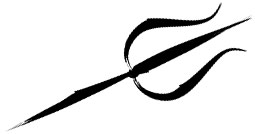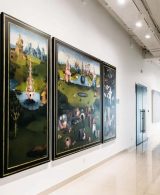Exhibition Jose Manuel Ballester

Imagine Rublev’s “Trinity” – without the Trinity, “Ivan the Terrible killing his son” – without the Terrible and his murdered son, “Cossacks writing a letter to the Turkish Sultan” – without the Cossacks, and “Barge Haulers on the Volga” – without barge haulers. Jose Manuel Ballester, a contemporary Spanish artist, removes human figures from the world’s masterpieces of painting. Written in exact accordance with the original – materials, technique, size – these are “copies” of works of art, deprived of their main characters!
“Hidden Spaces” is the name of the exhibition, and this is how the artist describes his method: without adding details missing from the original, to depict what is “hidden” behind the figures of people, carefully drawing out this “empty space” using the original technique. As a result, according to the artist, we see space as the author imagines it. At the same time, attention, and therefore the requirements, to the writing technique is intensifying, which brings the works of the old masters closer to the landscape painting that emerged later.
It seems that perception should be determined by how familiar the viewer is with the work. It would be a pure experiment if the viewer not only did not know these works, but also did not know that there were not enough people to work on them. Knowing in advance, anticipating the effect, you are rather surprised at your own ignorance – how few works of art you know enough to remember exactly what – who! – there’s not enough here. It seems to me that even if I had all the heroes on hand, I wouldn’t be able to relate them on the first try.
Knowing or not knowing the painting does not seem to have much effect on the resulting emotional response – it turns out that if you extend the background where the figure should be compositionally, you can get an almost physical experience of the “absence of the object.” Perhaps the main thing here is that the artist does not add any new details, leaving the central element of the painting no more developed than the periphery.
Emptiness creates a craving, stimulates you to fill it with something – it doesn’t matter whether you know what should be there, what is missing – the imagination turns on, and, without creating a specific image, it sets feelings in motion. The viewer experiences not so much the image as the movement of feelings, the intention of the image, his own sudden, inexplicable involvement.
Inna Antsyferova





